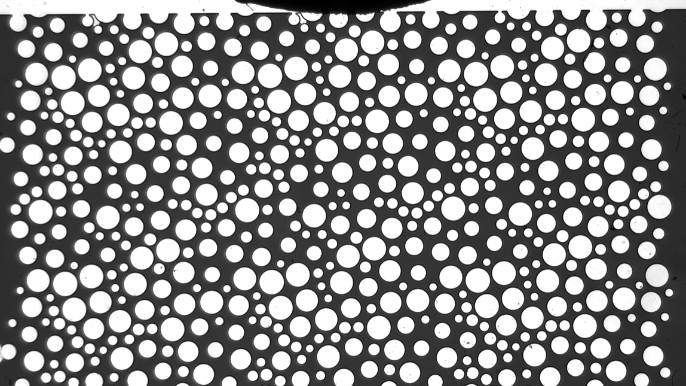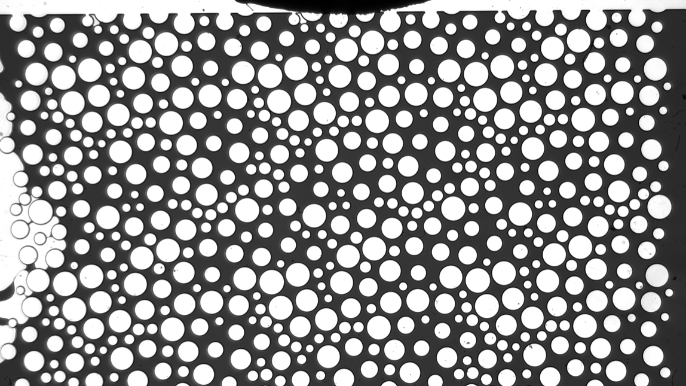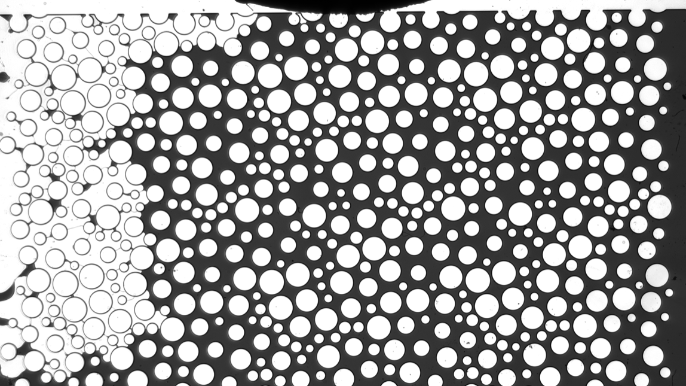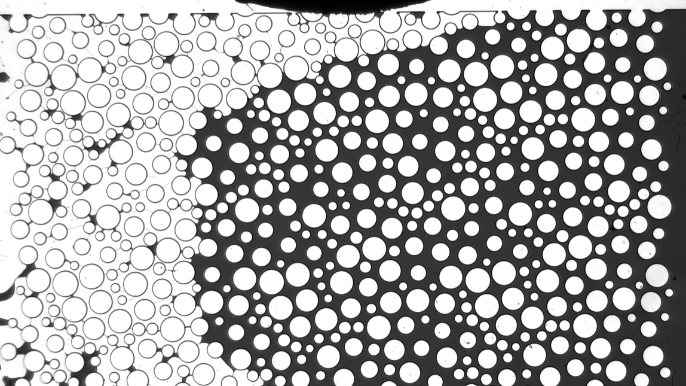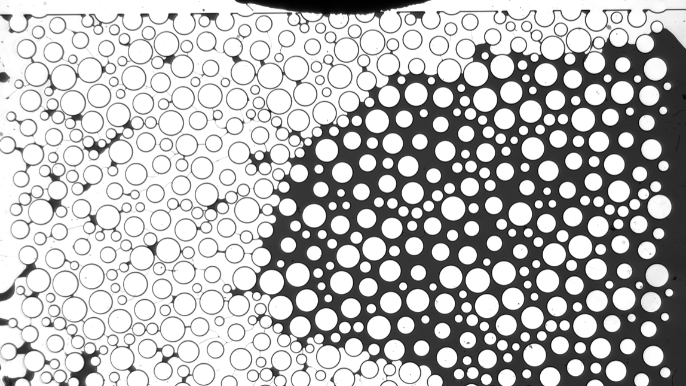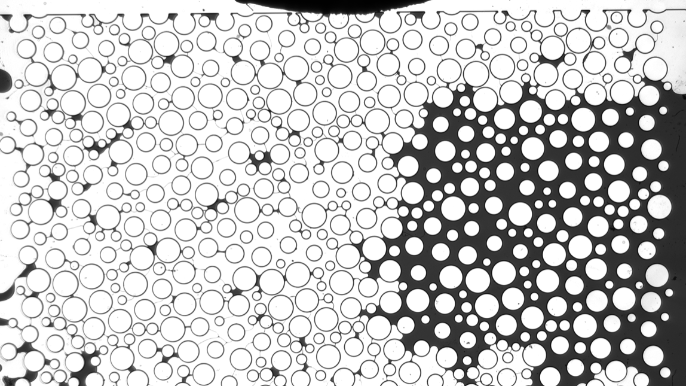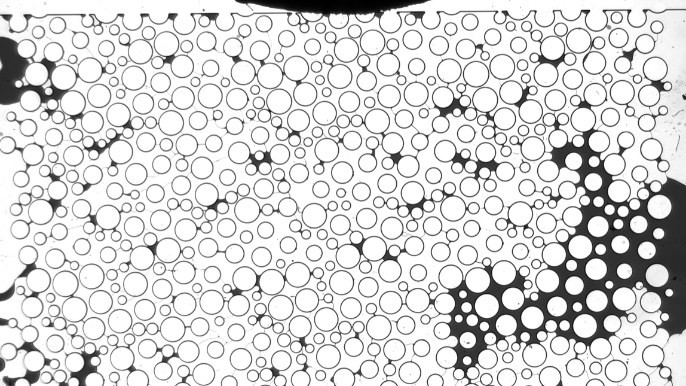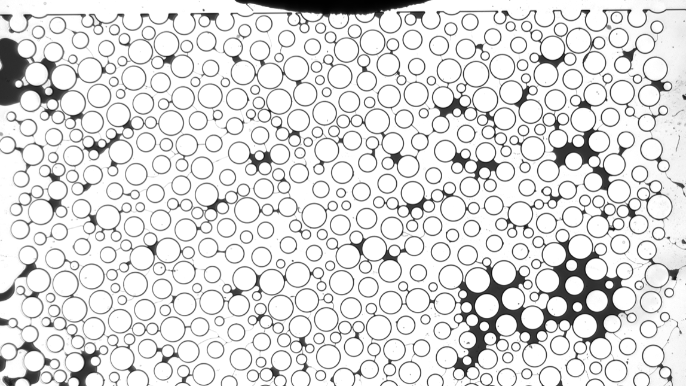Project description
The main focus of the project is on the performance of advanced micro-fluidic experiments to analyse multiphase flow processes and, by using advanced visualization and image processing techniques, to characterize the effects taking place at the interface between all phases, including the wetting and non-wetting phases, during drainage/imbibition cycles. The micro-fluidic experiments allow for the investigation of viscous and capillary dominated flow scenarios, in which a broad range for capillary number (Ca) and viscosity ratio (M) are employed in order to highlight their effect on the evolution of flow in a temporal and spatial manner. Furthermore, the role of the flow domain geometry in the evolution of flow, will also be investigated for the above-mentioned combinations of boundary conditions and physical fluids’ properties. A number of flow domains with similar average properties will be evaluated with respect to the corresponding Representative Elementary Volume (REV). The advantage of having a high temporal and spatial resolution from the experimental setup, will serve in the favour of time-dependent investigations of relaxation aspects of interfacial area. The obtained morphological images in the Ca-M-domain will be segmented, analysed, clustered and related to physical properties (like the coarse-grained capillary pressure or effective characteristic time scales) by Machine Learning (ML). The results for low capillary numbers (capillarity-dominated flow regime) and the principles of invasion percolation theory will be applied in an effort to identify patterns and norms which could potentially be generalized independently of the geometry of the flow domain. Image-based experimental data will be supplemented by data-rich simulation results obtained from pore-scale resolved Direct Numerical Simulations (DNS) via Smoothed Particle Hydrodynamics (SPH).
Project information
| Project name | Image-based morphological characterization of multiphase porous media flow |
| Project leaders | Holger Steeb (Nikolaos Karadimitriou, Holger Class) |
| Project duration | January 2019 - June 2022 |
| Project number | PN 1-4 |
- Follow-up project 1-4 (II)
Image-based morphological characterization of multiphase porous media flow
Publications of PN 1-4 and PN 1-4 (II)
2024
- H. Gao et al., “Pore-scale study of the effects of grain size on the capillary-associated interfacial area during primary drainage,” Journal of Hydrology, vol. 632, p. 130865, 2024, doi: https://doi.org/10.1016/j.jhydrol.2024.130865.
2023
- S. V. Dastjerdi, N. Karadimitriou, S. M. Hassanizadeh, and H. Steeb, “Experimental evaluation of fluid connectivity in two-phase flow in porous media,” Advances in Water Resources, vol. 172, p. 104378, Feb. 2023, doi: 10.1016/j.advwatres.2023.104378.
- A. Straub, N. Karadimitriou, G. Reina, S. Frey, H. Steeb, and T. Ertl, “Visual Analysis of Displacement Processes in Porous Media using Spatio-Temporal Flow Graphs,” IEEE Transactions on Visualization and Computer Graphics, 2023, doi: 10.1109/TVCG.2023.3326931.
2022
- H. Gao, A. B. Tatomir, N. K. Karadimitriou, H. Steeb, and M. Sauter, “Effect of Pore Space Stagnant Zones on Interphase Mass Transfer in Porous Media, for Two-Phase Flow Conditions,” Transport in Porous Media, Nov. 2022, doi: 10.1007/s11242-022-01879-0.
- S. V. Dastjerdi, N. Karadimitriou, S. M. Hassanizadeh, and H. Steeb, “Experimental Evaluation of Fluid Connectivity in Two-Phase Flow in Porous Media During Drainage,” Water Resources Research, vol. 58, Art. no. 11, Nov. 2022, doi: 10.1029/2022wr033451.
- D. Lee, N. Karadimitriou, M. Ruf, and H. Steeb, “Detecting micro fractures: a comprehensive comparison of conventional and machine-learning-based segmentation methods,” Solid Earth, vol. 13, pp. 1475–1494, 2022, doi: 10.5194/se-13-1475-2022.
- S. Frey et al., “Visual Analysis of Two-Phase Flow Displacement Processes in Porous Media,” Computer graphics forum, vol. 41, Art. no. 1, 2022, doi: 10.1111/cgf.14432.
- M. S. Walczak, H. Erfani, N. K. Karadimitriou, I. Zarikos, S. M. Hassanizadeh, and V. Niasar, “Experimental Analysis of Mass Exchange Across a Heterogeneity Interface: Role of Counter-Current Transport and Non-Linear Diffusion,” Water Resources Research, vol. 58, Art. no. 6, Jun. 2022, doi: 10.1029/2021wr030426.
2021
- Y. Chen et al., “Nonuniqueness of hydrodynamic dispersion revealed using fast 4D synchrotron x-ray imaging,” Science Advances, vol. 7, Art. no. 52, 2021, doi: 10.1126/sciadv.abj0960.
- H. Gao, A. B. Tatomir, N. K. Karadimitriou, H. Steeb, and M. Sauter, “A two-phase, pore-scale reactive transport model for the kinetic interface-sensitive tracer,” Water Resources Research, vol. 57, Art. no. 6, 2021, doi: 10.1029/2020WR028572.
- S. Konangi, N. K. Palakurthi, N. K. Karadimitriou, K. Comer, and U. Ghia, “Comparison of pore-scale capillary pressure to macroscale capillary pressure using direct numerical simulations of drainage under dynamic and quasi-static conditions,” Advances in Water Resources, vol. 147, p. 103792, 2021, doi: 10.1016/j.advwatres.2020.103792.
- H. Gao, A. Tatomir, N. Karadimitriou, H. Steeb, and M. Sauter, “Effects of surface roughness on the kinetic interface-sensitive tracer transport during drainage processes,” Advances in Water Resources, vol. 157, p. 104044, 2021, doi: 10.1016/j.advwatres.2021.104044.
- A. Wagner et al., “Permeability Estimation of Regular Porous Structures: A Benchmark for Comparison of Methods,” Transport in Porous Media, vol. 138, Art. no. 1, 2021, doi: 10.1007/s11242-021-01586-2.
- A. Yiotis, N. Karadimitriou, I. Zarikos, and H. Steeb, “Pore-scale effects during the transition from capillary-to viscosity-dominated flow dynamics within microfluidic porous-like domains,” Scientific Reports, vol. 11, Art. no. 1, 2021, doi: 10.1038/s41598-021-83065-8.
2020
- S. Hasan et al., “Direct characterization of solute transport in unsaturated porous media using fast X-ray synchrotron microtomography,” Proceedings of the National Academy of Sciences, vol. 117, Art. no. 38, 2020, doi: 10.1073/pnas.2011716117.
2019
- H. Steeb and J. Renner, “Mechanics of Poro-Elastic Media: A Review with Emphasis on Foundational State Variables,” Transport in Porous Media, vol. 120, Art. no. 2, 2019, doi: 10.1007/s11242-019-01319-6.


